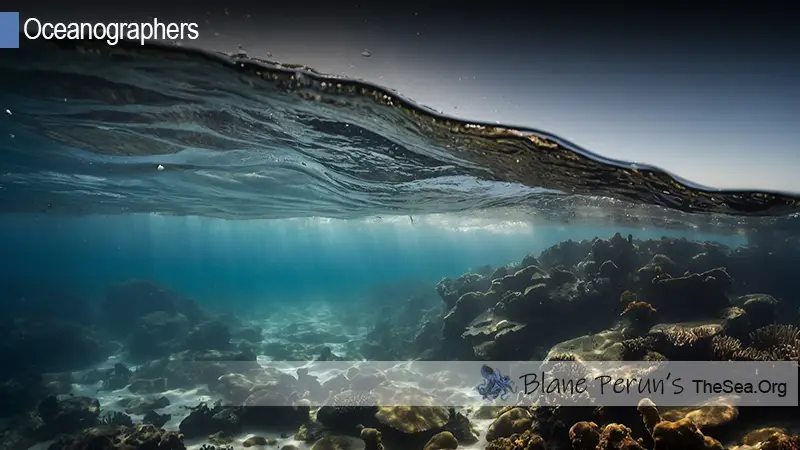What Do Oceanographers Use Echo-Sounding Devices To Study
Unveiling the Depths: The Role of Echo-Sounding in Oceanography
When we think about exploring the vast and mysterious world beneath the waves, it’s not just about the daring deep-sea divers or the sleek submarines that come to mind. There’s a crucial player in the game of ocean exploration that often goes unnoticed: the echo-sounding device. What Do Oceanographers Use Echo-Sounding Devices To Study? This question opens up a fascinating journey into the depths of our oceans, where these devices play a pivotal role in unlocking the secrets of the deep.
The Science Behind Echo-Sounding
Understanding the Basics
Echo-sounding devices, or sonar systems, are the oceanographers’ eyes in the depths where light barely penetrates. These devices send out sound waves that travel through water, bounce off the ocean floor or other objects, and return to the source. By measuring the time it takes for the echo to return, scientists can calculate the depth of the water or the distance to an object. This technology is not just about mapping the seafloor; it’s a window into the structure and composition of underwater landscapes.
Advanced Applications in Research
The application of echo-sounding extends beyond mere depth measurement. Advanced echo-sounders can provide detailed images of the seafloor, revealing underwater mountains, valleys, and even shipwrecks. This detailed bathymetric data is crucial for geological studies, helping scientists understand plate tectonics, underwater volcanoes, and earthquake risks. Furthermore, echo-sounding aids in the study of marine life by detecting schools of fish and other marine organisms, contributing to our understanding of ecosystems and biodiversity in the ocean depths.
Exploring Marine Habitats
Mapping Coral Reefs
Coral reefs are some of the most diverse and vital ecosystems on our planet. Echo-sounding devices help oceanographers map these underwater oases in detail, identifying the size, shape, and health of coral structures. This information is essential for conservation efforts and understanding how reefs change over time due to natural and human-induced factors.
Studying Seafloor Habitats
The seafloor is home to a myriad of habitats, from sandy plains to deep-sea vents teeming with unique life forms. Echo-sounding technology allows scientists to study these habitats without disturbing them, providing insights into the distribution and characteristics of benthic communities. This knowledge is crucial for understanding the complex interactions within marine ecosystems and the impact of environmental changes.
Navigating the Challenges of Deep-Sea Exploration
Overcoming Technical Limitations
Deep-sea exploration comes with its set of challenges, from high pressure to the absence of light. Echo-sounding devices must be designed to withstand these extreme conditions while providing accurate data. Advances in technology have led to more robust and sensitive systems, capable of delivering high-resolution images of the deep-sea environment, thus enabling more detailed and comprehensive studies.
The Role in Underwater Archaeology
Underwater archaeology has benefited immensely from echo-sounding devices. By revealing the locations of sunken ships, aircraft, and ancient submerged settlements, these tools have opened new chapters in human history. The precise mapping capabilities of echo-sounders help archaeologists plan their dives and research with better accuracy, protecting valuable underwater cultural heritage.
In conclusion, the question of What Do Oceanographers Use Echo-Sounding Devices To Study reveals a world of underwater exploration and discovery that is vital to our understanding of the Earth’s oceans. From mapping the intricate details of coral reefs to uncovering the mysteries of the deep-sea floor, echo-sounding devices are indispensable tools in the oceanographer’s toolkit.
FAQs on Echo-Sounding in Oceanography
1. How accurate are echo-sounding devices in measuring ocean depths? Echo-sounding devices are highly accurate, with modern systems capable of measuring depths to within a few centimeters. The accuracy depends on factors such as the frequency of the sound wave, water conditions, and the device’s technology.
2. Can echo-sounding devices detect marine life? Yes, echo-sounding devices can detect marine life, especially schools of fish. Some systems are specifically designed for this purpose, using different frequencies to identify various sizes and types of marine organisms.
3. Are echo-sounding devices harmful to marine animals? The impact of echo-sounding on marine life is a subject of ongoing research. While some studies suggest that high-intensity sound waves can affect marine mammals and fish, the industry is working towards developing less intrusive methods and frequencies.
4. Can echo-sounding devices be used in shallow waters? Yes, echo-sounding devices can be used in shallow waters, but it requires specialized equipment with higher frequencies to achieve accurate measurements due to the shorter travel time of sound waves.
5. What advancements are being made in echo-sounding technology? Advancements in echo-sounding technology include higher resolution imaging, multi-beam and wide-angle systems, and the integration of AI and machine learning for data analysis. These improvements are enhancing the detail and efficiency of underwater mapping and research.




